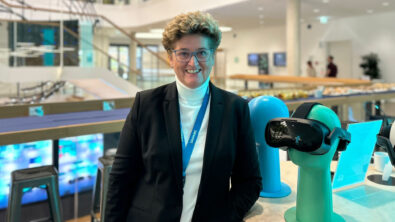Transforming the Capital Asset Lifecycle – Part 3: Closing the Lifecycle Loop


This article, “Transforming the Capital Asset Lifecycle – Part 3: Closing the Lifecycle Loop”, is the 3rd part in a blog series by John Lusty, Siemens Digital Industries Software global marketing lead for Energy & Utilities, focusing on the need for greater efficiencies from today’s capital assets – the plants, facilities, factories, and critical infrastructure that are the foundation of an organization’s operations.
In earlier blogs (Transforming the Capital Asset Lifecycle: Part 1, Transforming the Capital Asset Lifecycle: Part 2) we talked about the importance of managing the complete lifecycle of an asset, and how the manufacturing industries have made this a core competency with a Product Lifecycle Management, or “PLM,” methodology. By using such an approach, industry leaders recognized that their data was an asset that held tremendous value. As with any asset, it needed to be integrated and maintained to get full value.
The global Energy & Utilities industry has struggled to fully realize the value of their asset information due to incompatible file formats, silos of information, and this has restricted their ability to integrate and apply it in a way that generates business value.
A significant challenge was the need for highly functional, yet highly competitive plant CAD tools that were used to produce valuable 2D and 3D intelligent designs and were very difficult to combine into a single digital twin. Plus, there were other design formats to consider too. For example, the new plant design would include highly sophisticated equipment, such as turbines and specialized reactors, that were designed using mechanical CAD tools.The buildings came from architectural CAD. The site was modeled using civil CAD tools for roads and other earthworks that included geo-referencing information from GIS software. So that’s just the engineering design data!

On a capital project, engineering feeds procurement, fabrication, construction, and commissioning, with each phase introducing even more data and documentation. At the project’s conclusion, the supporting information is available to be handed over from the engineering contractors (EPCs) and service providers to the owner-operator in a manner typically specified at the time of contract award. How much of that project information the owner asks for depends on their confidence and ability to leverage the information to more efficiently operate their new capital asset over potentially a very long time.
As the capital project evolves into a capital asset, the EPC needs the ability to intelligently integrate all data and documents associated with each phase of project execution in an organized manner and deliver it to their client, the owner-operator. Knowledge workers supporting start-up and normal plant operations need access to the digital twin of the physical assets, sometimes at a very high level, and sometimes at a very granular level depending on their role. At the same time, maintaining licensed instances and trained administrators for all the tools that were used to create the digital twin would be costly, and is just not practical in most cases.
What if you could neutralize files from different engineering design tools and centralize them in a common repository while maintaining granular access to the tag information, right down to the object and attribute level? In the same structure, what if you could include other outstanding project documents and files, such as spreadsheets, project plans, and technical documentation that represent the remaining information needed for a complete digital twin? To that, you could then apply robust lifecycle management capabilities to properly manage change, optimize work processes, visualize everything, and generate insightful reports and analytics. Would you want to allow, yet control, access to that information so that your knowledge workers and stakeholders have the level of visibility they require to make better decisions faster? Would you need it all accessible on any device and any operating system, while ensuring your intellectual property is secure?
The answer to most of the above is probably yes. However, the capabilities and technology required to do all of that would need to be robust. To understand how to do this, stay tuned for the next blog where we’ll discuss how and when you can access the capabilities we’ve just discussed.
Part 1: Transforming the Capital Asset Lifecycle: Part 1
Part 2: Transforming the Capital Asset Lifecycle: Part 2
Part 4: Transforming the Capital Asset Lifecycle: Part 4
About the author:
John Lusty is the global lead for Energy & Utilities Industry Marketing for Siemens Digital Industries Software and is based in Calgary, Canada. John has spent over 25 years working in, or in support of plants and facilities as well as the operators and professionals who are tasked with their ongoing operation. John is particularly interested in technologies and practices that improve the safety, efficiency, and overall sustainability of businesses operating in today’s challenging Energy & Utilities industry.

 Separate design and EBOM to boost PLM efficiency
Separate design and EBOM to boost PLM efficiency

 What’s new in Teamcenter Quality 2412
What’s new in Teamcenter Quality 2412 Exploring the latest capabilities of Teamcenter Quality 2412 Are you in need of a solution that facilitates a closed-loop...
Exploring the latest capabilities of Teamcenter Quality 2412 Are you in need of a solution that facilitates a closed-loop...